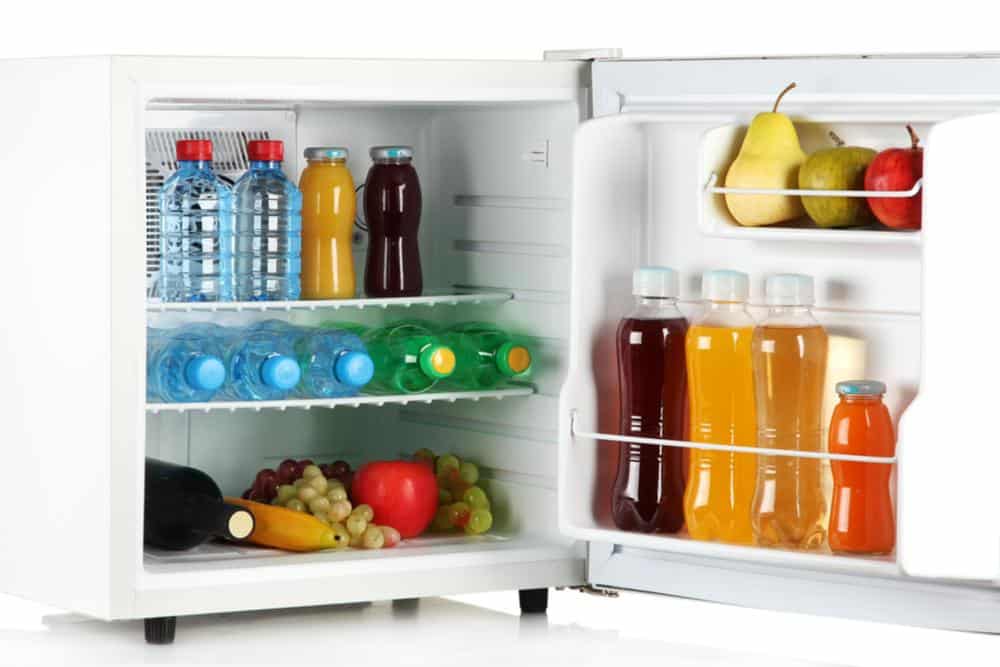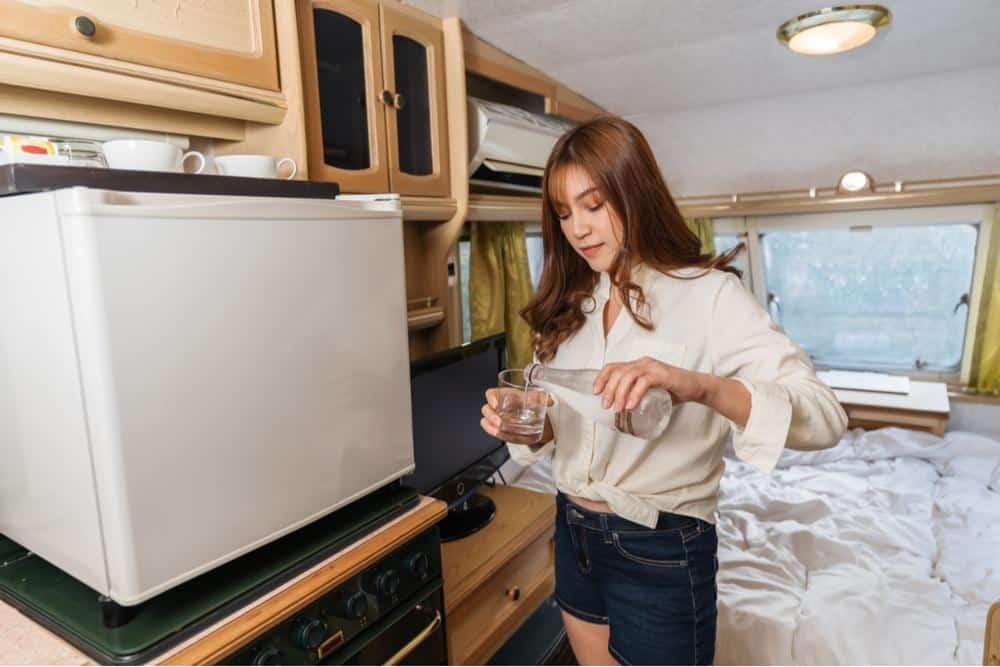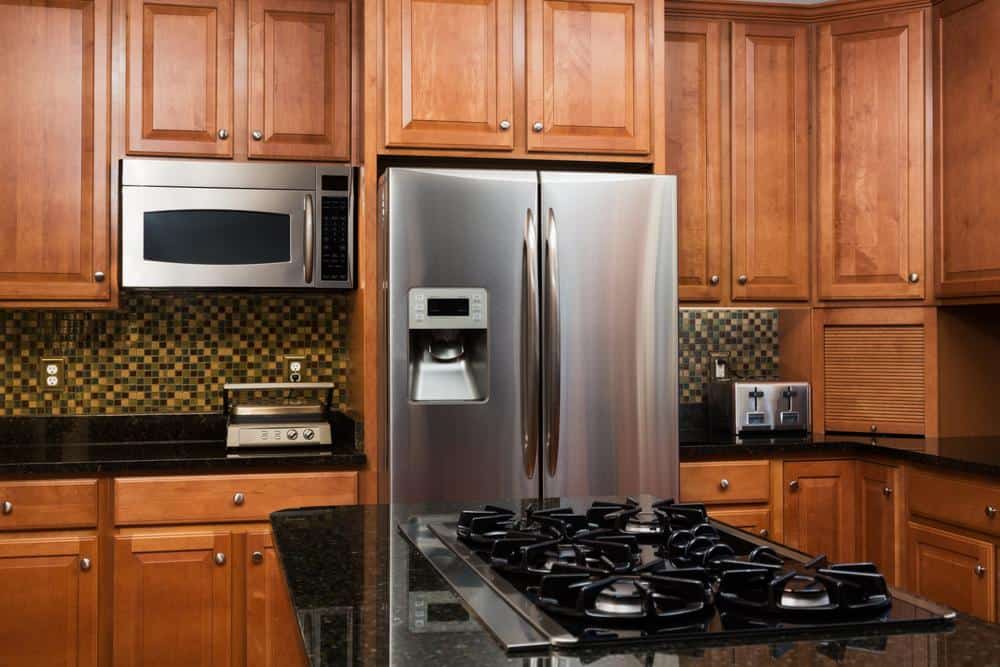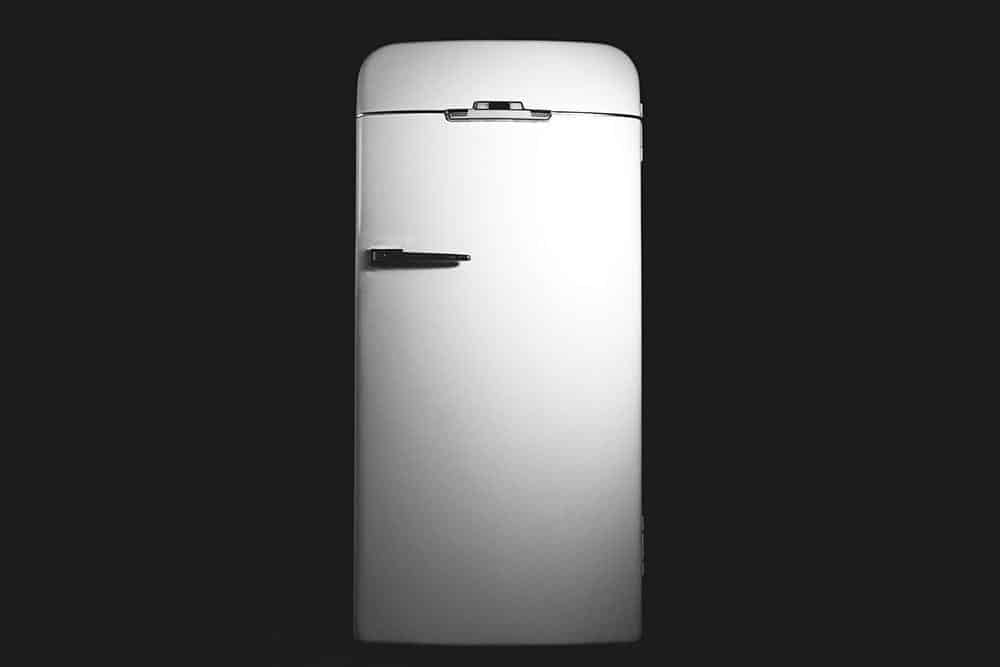Refrigerators are among the largest household appliances. Along with their size, fridges also constantly use electricity to keep our food from spoiling. By using electricity in this way, fridges can seem inefficient.
One way to understand how much electricity your fridge consumes is by measuring the number of amps a refrigerator uses. First, let’s explain what an amp is with respect to appliances. Next, we’ll go through different types of fridges to understand their amperage and answer the question, “how many amps does a refrigerator use.”
Amps measure the rate at which electric currents flow through a material. Amps, watts, and volts play an essential role in understanding how much electricity an appliance or machine uses.
Amps multiplied by voltage equals wattage. Watts are the measurements people use to determine how much energy their appliance or machine uses. Conversely, watts divided by voltage equals amps.
It is essential to understand what an amp is in order to figure out how much power consumption an appliance like a fridge utilizes because it can differ from fridge to fridge, while voltage stays the same. For example, in North America, standard electric power sockets are 120-volts, while larger sockets used for ovens are 240-volts.
As everyone knows, fridges use a standard wall socket. That means their voltage is always 120. Now that we know the voltage, once we know the amperage of the fridge, finding its energy consumption is a breeze.
On your circuit breaker at home, each breaker is maxed out at either 15 or 20 amps. Once you use more than that, the breaker will flip, causing the power to cut out. All fridges require the initial amperage to be 15 or 20 amps because it takes more current to turn on the appliance than it does to run.
While most think of a refrigerator as a household appliance that resides in your kitchen, there is no "typical refrigerator". Fridges come in all shapes and sizes. Rather than looking at the amps that an average refrigerator uses, we need to look at the refrigerator power consumption for different types of fridges.
A fridge’s energy efficiency depends significantly on its size, make, and production year. Let’s go through some examples to show the different levels of power consumption different types of fridges use.
As you might expect, mini fridge use results in relatively low energy consumption due to their size. Due to their low power consumption, mini-fridges also use less amperage.
People usually define mini-fridges as a fridge with less than 4.5 cubic feet of space inside. In comparison, the average normal-sized fridge has a volume of around 18 cubic feet.

Mini Fridges Typically Use 2 amps or Less
On average, mini-fridges use 55 to 85 watts per hour. But in some cases, they can run up to 240 watts. So to determine refrigerator amps, we need to divide the number of watts by voltage, which we know is 120 on average. That means an average mini fridge uses no more than 2-amps, although they can use less.
Let’s go through an example. The Insignia 3.3 cubic feet mini fridge uses 172.5 watts at 115 volts. That means it uses 1.5 amps when operating.
RV refrigerators are not a common type of fridge, but as RVs have become more popular, so have fridges that fit inside. An RV fridge is a small refrigerator, but still larger than mini-fridges, measuring between 4 and 12 cubic feet. Aside from their size, RV fridges are similar to mini-fridges.
A 12 volt RV Fridge - Courtesy of All About RVs
Some people use mini-fridges in their RVs, but they can be too small for optimal use. RV refrigerators often have two doors like a regular fridge, while mini-fridges only have one compartment. RV fridges are optimal for people who need more space but can’t fit a normal-sized fridge in their space.
 RV Fridges may use a bit more amperage than mini fridges - up to 4 amps or so
RV Fridges may use a bit more amperage than mini fridges - up to 4 amps or so
RV fridges need to keep their contents cool while also not using massive amounts of energy. In general, RV fridges use between 200 and 500 watts per hour. That means they need between 1.5 and 4 amps to operate.
As the name suggests, top freezer fridges are fridges with two compartments-the fridge in the lower compartment and the freezer in the top compartment. These are the most common types of refrigerators people have in their homes.
On average, top freezers have 16 cubic feet of room to store food, including the freezer and fridge space. Although these measurements can vary slightly, they are generally 62 inches tall, 30 inches wide, and 32 inches in depth.
Average top freezer refrigerator models use between 250 and 600 watts per hour, although some can run higher. Older models, which we will get to later, can use much higher quantities of energy. The average amps of a top freezer fridge are between 2 and 5.
Bottom freezers have almost the same specifications as top freezers. They are approximately the same size and volume, and the only difference is the freezer is on the bottom.
Bottom freezers are generally 62 inches tall, 32 inches wide, and 32 inches deep. These measurements can vary from appliance to appliance. Larger fridges will use more energy, causing them to use more amps.
As with the top freezers, bottom freezers usually run from 250 to 600 watts per hour. That means the average amperage will be between 2 and 5 amps.
French door style fridges are becoming more popular. French door fridges have two doors on top and a freezer drawer or two below the doors. They have a style unique to themselves, and the two opening doors give owners more access to the hard-to-reach parts of the fridge.

French Door Refrigerators Use Up to 6 amps or so
French door fridges are usually between 67 and 70 inches tall, 30 to 36 inches wide, and 29-35 inches deep. They are generally larger than the bottom or top freezers and use more power accordingly. French door-style fridges usually have three doors, which can cause inefficiency due to more places for cool air to leak out.
On average, French door-style fridges use between 300 and 700 watts per hour. That means they generally use between 2 and 6 amps when in use.
Side-by-side fridges are generally the largest type of fridge people have in their homes. Side-by-side fridges have two side-by-side doors-one for the freezer and one for the fridge. Side-by-side fridges offer a different space configuration that some consumers enjoy.
Side-by-side fridges are 67 to 70 inches tall on average, 32 to 38 inches wide, and 30 to 36 inches deep. Their energy consumption is approximately the same as a French door-style refrigerator.
Side-by-side fridges use between 300 and 700 watts per hour, although some can use more depending on their size. If a fridge uses 300 watts, it needs at least 2.5 amps to operate. If it uses 700 watts, it needs at least 5.8 amps.
Older refrigerator models use wildly different amounts of power. In 1995, the United States government started its Energy Star program. Energy Star’s aims were twofold-reduce electricity cost for consumers and reduce overall energy usage on appliances.
An energy efficient refrigerator is good for the environment and using less power is good for your electric bill.
EnergyStar is Encouraging Owners of Older Refrigerators to Upgrade to a Newer Fridges Which Use Much Less Energy
Older refrigerators made before introducing Energy Star standards can use much higher amounts of energy than new models. In some cases, older, smaller fridges can use double the amount of power a new fridge uses.

Older refrigerators are much less energy efficient than newer refrigerators
Energy Star recommends upgrading your fridge if it’s more than 15 years old. Fridges over 15 years old can cost you hundreds of extra dollars a year in electricity costs.
When it comes to power usage, older fridges can use up to 1500 watts, nearly double the highest energy-consuming modern refrigerator. If a fridge uses 1500 watts, they need at least 13 amps! That means an old fridge uses nearly triple the number of amps newer fridges use.
When you first plug in a refrigerator, it needs a certain level of amps that are much higher than its average operating amperage. As a result, when appliances start, they have what’s called an “inrush current” of energy.
An inrush current is the maximum amount of electrical current an appliance draws when it first starts operating. Inrush currents occur because appliances have components like capacitors, inductors, and transformers that require large amounts of power to begin operating.
Capacitors, inductors, and transformers essentially need to be ‘charged up’ before they can operate. That initial charge requires more power than the fridge does under regular operation.
Since energy usage is higher during start-up for an electrical appliance, fridges need to utilize more amps. Most fridges require 15 available amps to start efficiently.
Most modern construction techniques require builders to install a dedicated circuit for your fridge. Most of the time, builders will install a dedicated 20-amp circuit to ensure that the circuit can handle any inrush current.
Although you can plug smaller fridges that use fewer amps into a standard wall socket, it isn’t recommended. When an inrush current occurs, or your fridge needs to use more energy, the amperage will spike.
If you don’t have a dedicated circuit for your fridge, this can cause electrical overload. An electrical overload occurs when too strong a current is traveling through wires that cannot handle such surges.
An electrical overload can damage the wiring in your home, including causing a fire. That’s why contractors and electricians will always recommend that you give your fridge a dedicated circuit with 20-amps.
So the answer to the question of "How many amps does a refrigerator use?" will depend on the type of refrigerator you have in your home. Smaller fridges use up less energy, so they require fewer amps, and the opposite is true of larger refrigerators. Knowing this difference will help you understand how much electricity your refrigerator is consuming and, hopefully, lead to more efficient use of that energy.
